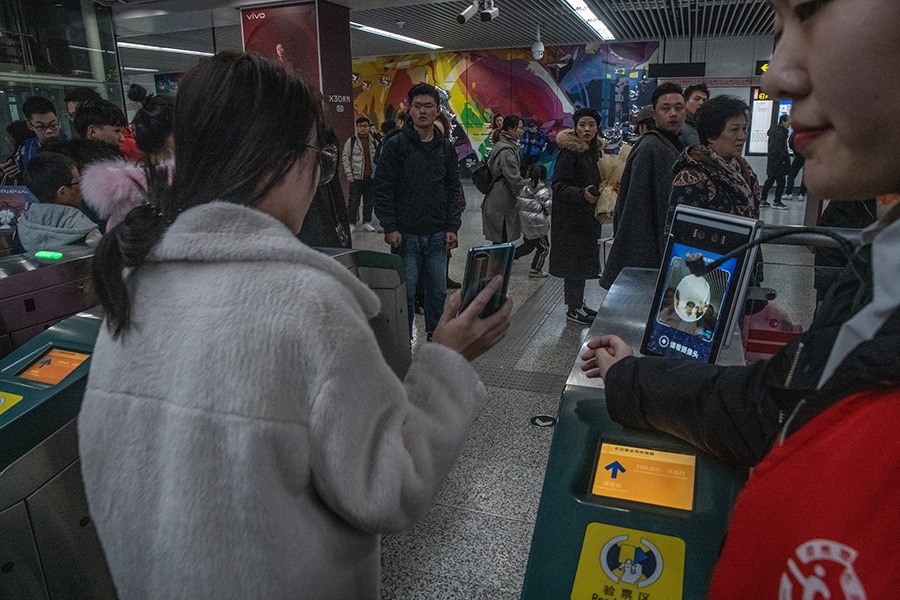
Spying tools turn China into surveillance state, with powerful police
The authorities can scan your phones, track your face and find out when you leave your home. One of the world's biggest spying networks is aimed at regular people, and nobody can stop it
 A facial-recognition scanning system at the entrance of the subway station in Zhengzhou, China, on Dec. 14, 2019. The authorities can scan your phones, track your face and find out when you leave your home. One of the world’s biggest spying networks is aimed at regular people, and nobody can stop it
A facial-recognition scanning system at the entrance of the subway station in Zhengzhou, China, on Dec. 14, 2019. The authorities can scan your phones, track your face and find out when you leave your home. One of the world’s biggest spying networks is aimed at regular people, and nobody can stop itImage: Gilles Sabrié/The New York Times
ZHENGZHOU, China — China is ramping up its ability to spy on its nearly 1.4 billion people to new and disturbing levels, giving the world a blueprint for how to build a digital totalitarian state.
Chinese authorities are knitting together old and state-of-the-art technologies — phone scanners, facial-recognition cameras, face and fingerprint databases and many others — into extensive tools for authoritarian control, according to police and private databases examined by The New York Times.
Once combined and fully operational, the tools can help the police grab the identities of people as they walk down the street, find out who they are meeting with and identify who does and doesn’t belong to the Communist Party.
The United States and other countries use some of the same techniques to track terrorists or drug lords. Chinese cities want to use them to track everybody.
The rollout has come at the expense of personal privacy. The Times found that the authorities stored the personal data of millions of people on servers unprotected by even basic security measures. It also found that private contractors and middlemen have wide access to personal data collected by the Chinese government.
This build-out has only just begun, but it is sweeping through Chinese cities. The surveillance networks are controlled by local police, as if county sheriffs in the United States ran their own personal versions of the National Security Agency.
©2019 New York Times News Service




